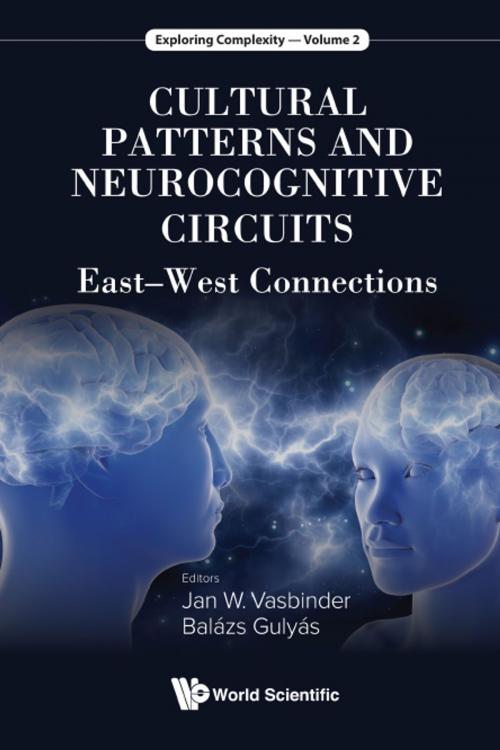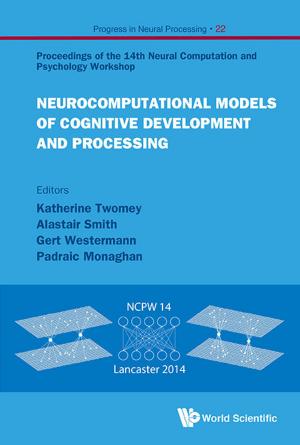Cultural Patterns and Neurocognitive Circuits
EastWest Connections
Nonfiction, Health & Well Being, Psychology, Developmental Psychology, Social & Cultural Studies, Social Science, Anthropology| Author: | Jan W Vasbinder, Balázs Gulyás | ISBN: | 9789813147508 |
| Publisher: | World Scientific Publishing Company | Publication: | September 16, 2016 |
| Imprint: | WSPC | Language: | English |
| Author: | Jan W Vasbinder, Balázs Gulyás |
| ISBN: | 9789813147508 |
| Publisher: | World Scientific Publishing Company |
| Publication: | September 16, 2016 |
| Imprint: | WSPC |
| Language: | English |
Our age is characterized by global access to information, places and cultures: we can gain more and more knowledge about "the others": other people and their cultures by "indirect knowledge" — learning about them via the global information net assisted by electronic and other high-tech communication channels, as well as by "direct knowledge": personally visiting various parts of the world and meeting local people in their own natural and social environments.
East and West, two major worlds of aspirations, cultures, world-views, theoretical and practical approaches to life and death, have come closer by personal experiences of both Westerners and Easterners. But do we really understand the similarities and differences between the cultural-cognitive-behavioural-emotional patterns of the East and the West, with special regard to their neurobiological underpinnings in the human brain?
The contents of this book focus on cultural patterns and cognitive patterns in the East and West, with special regard to those patterns which are determined by our natural-genetic endownments in contrast to those patterns which are influenced by our cultural ("East–West") influences, and within this context a unique flavour is given to the "good life" aspects of adapting to this global community.
Contents:
- Introduction (J Vasbinder and B Gulyás)
- Cycles and Hierarchies (J H Holland)
- Synaptic Epigenesis and the Evolution of Higher Brain Functions (J-P Changeux)
- East-West Differences and Implications for Cognitive Neuroscience (S Gielen)
- Health of Mind Captured: Brain Trained to Body Talk (S Kéri)
- Analytic versus Holistic? An Analysis of Some Proposals for Cognitive East-West Differences (C Pléh)
- Searching for Unasked Questions: An Unfinished "East-West-Exploration" (E Pöppel and Y Bao)
- When Brains Design/Experience Buildings: Architectural Patterns for a Good Life (M A Arbib)
- The Good Life Lost and Found: East, West, Home's Best (S E Larsen)
- A Good Death: Resolving the Complexity of Mortality (A H Y Ho and G Tan-Ho)
- Is Consciousness a Riddle Wrapped in a Mystery Inside an Enigma? Mysterianism and Beyond (R Vergauwen)
- Appendix: The Video and Presentation Links
Readership: Students and researchers interested in following cultural and behavioral patterns, with respect to their neurobiological foundations.
Our age is characterized by global access to information, places and cultures: we can gain more and more knowledge about "the others": other people and their cultures by "indirect knowledge" — learning about them via the global information net assisted by electronic and other high-tech communication channels, as well as by "direct knowledge": personally visiting various parts of the world and meeting local people in their own natural and social environments.
East and West, two major worlds of aspirations, cultures, world-views, theoretical and practical approaches to life and death, have come closer by personal experiences of both Westerners and Easterners. But do we really understand the similarities and differences between the cultural-cognitive-behavioural-emotional patterns of the East and the West, with special regard to their neurobiological underpinnings in the human brain?
The contents of this book focus on cultural patterns and cognitive patterns in the East and West, with special regard to those patterns which are determined by our natural-genetic endownments in contrast to those patterns which are influenced by our cultural ("East–West") influences, and within this context a unique flavour is given to the "good life" aspects of adapting to this global community.
Contents:
- Introduction (J Vasbinder and B Gulyás)
- Cycles and Hierarchies (J H Holland)
- Synaptic Epigenesis and the Evolution of Higher Brain Functions (J-P Changeux)
- East-West Differences and Implications for Cognitive Neuroscience (S Gielen)
- Health of Mind Captured: Brain Trained to Body Talk (S Kéri)
- Analytic versus Holistic? An Analysis of Some Proposals for Cognitive East-West Differences (C Pléh)
- Searching for Unasked Questions: An Unfinished "East-West-Exploration" (E Pöppel and Y Bao)
- When Brains Design/Experience Buildings: Architectural Patterns for a Good Life (M A Arbib)
- The Good Life Lost and Found: East, West, Home's Best (S E Larsen)
- A Good Death: Resolving the Complexity of Mortality (A H Y Ho and G Tan-Ho)
- Is Consciousness a Riddle Wrapped in a Mystery Inside an Enigma? Mysterianism and Beyond (R Vergauwen)
- Appendix: The Video and Presentation Links
Readership: Students and researchers interested in following cultural and behavioral patterns, with respect to their neurobiological foundations.















